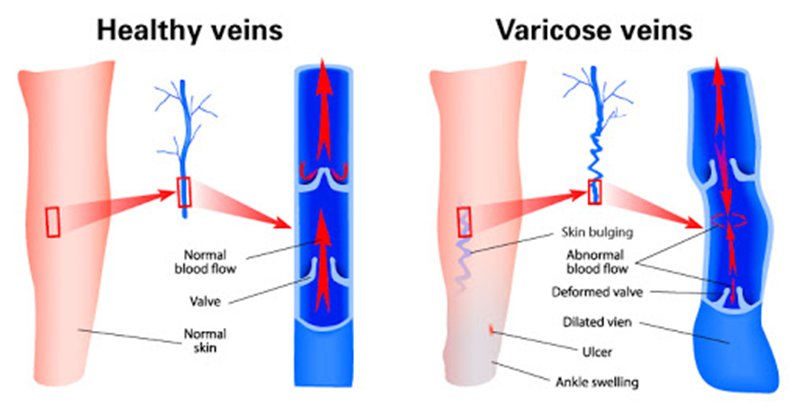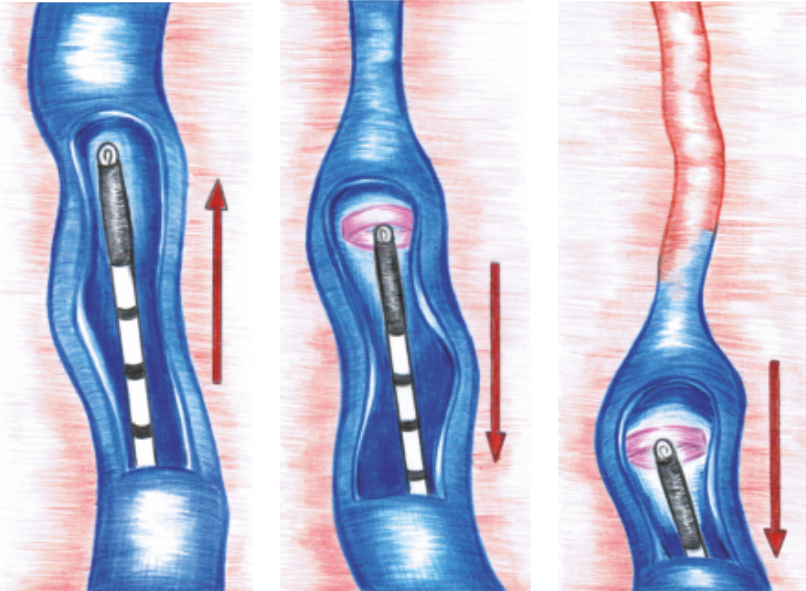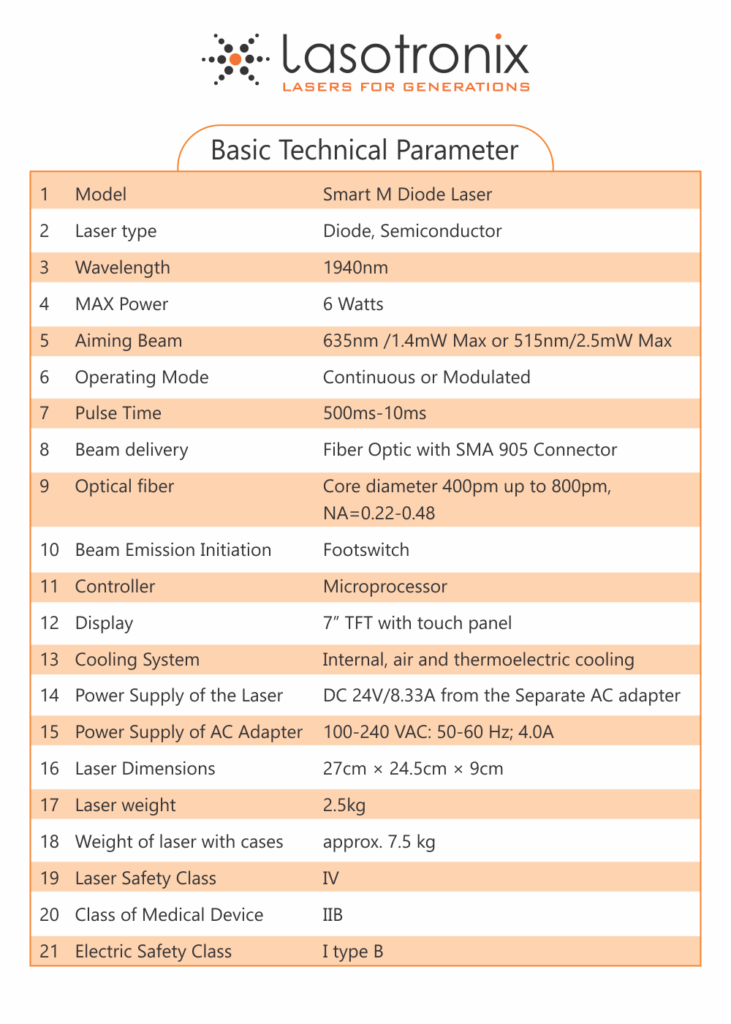
Lasotronix Smart M 1940 nm : 4th Generation Laser Diode for EVLA
EVLA is a method of treating varicose veins using carefully controlled laser beams. This method doesn’t require Open surgery. Instead, this method uses the heat from a laser ablate the malfunctioning veins. The heat kills the walls of the veins and the body, thus naturally absorbing the dead tissue and destroying the malfunctioning veins. The veins usually targeted are in the main trunks of the legs:
- Great Saphenous Vein (GSV)
- Small Saphenous Vein (SSV)
- Tributary Veins
- Perforators
- Recurrences

Details about Lasotronix Smart M 1940 nm
The most technologically advanced Laser diode for EVLA, Lasotronix Smart M Laser Diode has the highest absorption coefficient in water as compared to the Generation 1 to Generation 3 laser diodes (808 nm, 980 nm, and 1470 nm).
This means that there is a higher absorption of the laser energy by the interstitial water in the venous walls. Studies have proven that efficiency of 1940 m laser to be the most superior for EVLA than the others. In fact, it has been proven that the Lasotronix Smart M 1940 nm laser diode has an absorption rate 40 times higher than a 1470 nm laser and up to 290 times higher than the 980 nm laser.

Advantages of Lasotronix Smart M 1940 nm laser:
- Effective vein closure using smaller doses of energy supplied to the vein (an average of 47 J/cm with a power range of 3 to 6 W): Significantly reduced post-procedural pain and chances of complication with lesser risk of burns and related discoloration effects.
- Better occlusion rates: The water-based structure of the vein structure ensures that the water-based lasers like 1470 and 1940 nm are preferentially absorbed in the intercellular water of the vein wall and in the water content of the blood. This results in lesser chance of collateral heating bringing about optimal vein ablation.
- Higher effectiveness of treatment (95%) in the first year of the treatment and 93% after three years according to the various scientific studies.
- No risk of fiber carbonization: Lack of fibre carbonization ensures that the optical fibre used in one procedure by engaging both the extremities can be reused without having to remove char from its surface and using a new one.

Why Lasotronix Smart M?
Security
Patient Data Storage
Extremely low chances of breakdown
Warranty
Technical Parameters of Lasotronix Smart M 1940 nm

Download Lasotronix Smart M 1940 nm product catalogue


